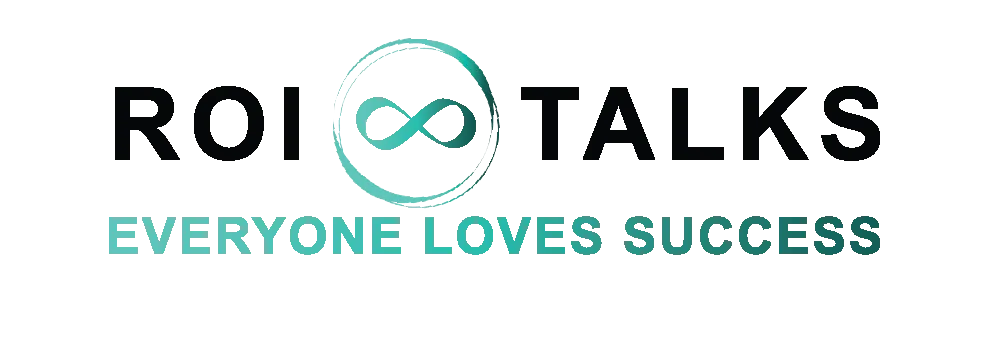
Everyone Loves Success
ROI TALKS
Roi Talks Blog

Taking Leadership in Stride: The Art and Adventure of Managing By Walking Around
Through MBWA, managers and employees can enhance their knowledge, skills, and attitudes, leading to a more effective and engaged workforce. ...more
leadership ,skills business &management
May 15, 2023•2 min read

Mapping Success: Harness the Power of the 9-Box Grid
The 9-Box Grid, a pivotal tool for evaluating and investing in individuals, is thought to have its roots within the consulting firm, McKinsey. It was created as a method for assessing different busine... ...more
efficiency ,communication skills &success
May 15, 2023•3 min read

From Good to Great: How the IKO Principles Can Take Your Leadership to the Next Level?
The IKO Principles - Inner Self, Knowledge, and Outer Self - offer a set of guidelines that can help you unlock your leadership potential. ...more
communication
April 26, 2023•5 min read

How to Use the IKO Principles to Boost Your Sales Success?
By applying the IKO Principles to sales, you can increase your chances of success and build stronger relationships with your customers. ...more
leadership ,money skills success &business
April 26, 2023•6 min read

How to Use the IKO Principles to Ace Your Next Job Interview?
The IKO Principles - Inner Self, Knowledge, and Outer Self - are a set of guidelines that outline the steps you can take to become a great presenter/speaker/orator. ...more
efficiency ,success meetings &education
April 23, 2023•5 min read

“I Do Love A Locker Room. It Smells Like Potential.” - Ted Lasso
Ted Lasso is a television show that has captured the hearts of many, thanks to its heartwarming storyline and its uplifting messages about work and life. ...more
efficiency ,success inspiration &management
April 09, 2023•6 min read

The Ultimate Guide To 18 Powerful Team Building Activities (Face To Face or Online) of Time Ranges 5, 10, 15, 20, 25 & 30 Minutes
In any work environment, promoting collaboration, communication, and team spirit is essential for success. Team building activities play a crucial role in strengthening relationships and improving ove... ...more
leadership ,efficiency management &education
April 04, 2023•9 min read

Unlock the Power of Your Mind: An Easy To Implement Guide for Leaders, Teams, and Change-Makers to Impact Careers, Businesses & Lives
Picture this: an enigmatic force, brimming with potential, lies dormant within each one of us—a force so potent that, when unleashed, it can transform not only our lives but the very fabric of the wor... ...more
leadership ,Mindset
April 03, 2023•7 min read

Stop Saying: "The mind is everything. You become what you think about"
Imagine a world where your every thought, feeling, and emotion shapes your reality—a world where the power of the mind transcends its physical boundaries and encompasses the entirety of your being. ...more
Mindset
April 03, 2023•12 min read

Feelings Are Not Real. Feelings Are A Reaction To A Perceived Wound That Has Never Been Healed
What if the essence of our emotional world, the very core of our being, is shrouded in a veil of illusion? ...more
efficiency ,skills inspiration &Mindset
April 01, 2023•5 min read

The Art of Silence: Communicate, Connect & Collaborate Without Words
In a world where communication often takes place through digital devices, it's easy to forget the impact of nonverbal communication. The subtle gestures, facial expressions, and even moments of silenc... ...more
leadership ,communication skills &success
March 29, 2023•4 min read

The Four Critical Cs in Communication and Connection: Insights from Asia, Africa, and the Middle East
Effective communication is vital for building connections, regardless of culture or region. In Asia, Africa, and the Middle East, people recognize the importance of embracing the four Cs. ...more
efficiency ,skills success &Communication patterns
March 25, 2023•3 min read

The Power of Nourishing Presentations/ Public Speaking With Ethos, Pathos & Logos
Imagine captivating an audience, leaving them spellbound, and inspiring them to act on your message. ...more
communication ,skills meetings &Personalization in loyalty marketing through storytelling
March 19, 2023•6 min read

The Art of Persuasion: The Power of Ethos, Pathos, and Logos in Sales
Sales is fundamentally about persuasion. To be successful in sales, one must convince potential customers that a product or service is worth their time and money. ...more
money ,business &management
March 19, 2023•6 min read

The 4Fs of Fear
Humans possess natural inclinations to fear certain things that have been historically linked to survival and safety. These fears can be considered innate or universal across various cultures. ...more
efficiency ,fears success &inspiration
March 18, 2023•5 min read

Incorporating The Triune Brain Into Sales For Greater Success
The triune brain was proposed by neuroscientist Paul MacLean. It states the human brain is divided into three main parts: the reptilian brain, the limbic brain, and the neocortex (MacLean, 1990). ...more
money ,business management &education
March 18, 2023•7 min read

When the Going Gets Tough, the Tough Get Going
When times get tough, it can be tempting to throw in the towel and give up. Billy Ocean is one of the singers I truly adore. If you have not heard his song "When the Going Gets Tough, the Tough Get Go... ...more
efficiency ,inspiration Mindset &Burnout
March 17, 2023•6 min read

The Wink of A Lie: The Myth That 93% Of Communication Is Non-verbal
For decades, Albert Mehrabian's research on communication has been misinterpreted and misrepresented by leaders, motivational speakers, trainers, and communication experts. ...more
Communication patterns
March 13, 2023•5 min read

9. Rejection | Soul of Sales - The Nine Universal Laws
Overcoming rejection is an admirable quality that only a few possess. Such individuals view rejection as an opportunity to grow and learn from their experiences. ...more
communication ,skills success &education
March 12, 2023•5 min read

8. Communication | Soul of Sales - The Nine Universal Laws
Communication is the foundation of all human interaction and relationships. It is the process of exchanging information, ideas, and emotions between individuals or groups. It is a dynamic process that... ...more
skills ,success management &education
March 12, 2023•5 min read

Three Reasons Why & How Storytelling Is Crucial In Leadership
Leadership is about more than just managing tasks and delegating responsibilities. At its core, leadership is about inspiring and motivating others to achieve a common goal. ...more
The effectiveness of storytelling in loyalty marketing
March 10, 2023•8 min read

7. Value | Soul of Sales - The Nine Universal Laws
Many years ago I was told to value your service and at that time I just brushed the statement away. ...more
success ,business inspiration management &education
March 10, 2023•8 min read

Framework of How Loyalty Marketing & Storytelling Is A Match Made In Heaven
Together, loyalty marketing and storytelling are a powerful combination for businesses looking to build long-term relationships with their customers. Loyalty marketing is the practice of rewarding cus... ...more
The effectiveness of storytelling in loyalty marketing ,The framework for using storytelling
March 10, 2023•6 min read

What We All Can Learn About Leadership From Sheikh Zayed bin Sultan Al Nahyan?
Sheikh Zayed bin Sultan Al Nahyan was the founding father of the United Arab Emirates and a champion of human development, sustainability, wisdom, and respect. ...more
United Arab Emirates ,Founding Father of the United Arab Emirates &Social Justice
March 10, 2023•6 min read
ROI TALKS™
Marina Plaza - Office 1004 -1006
Dubai Marina, Dubai, UAE



